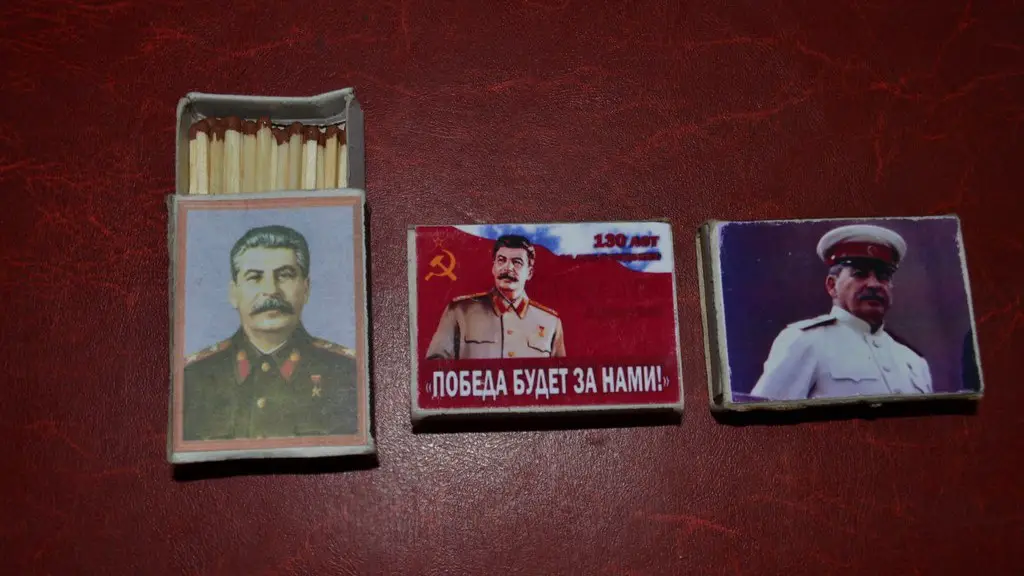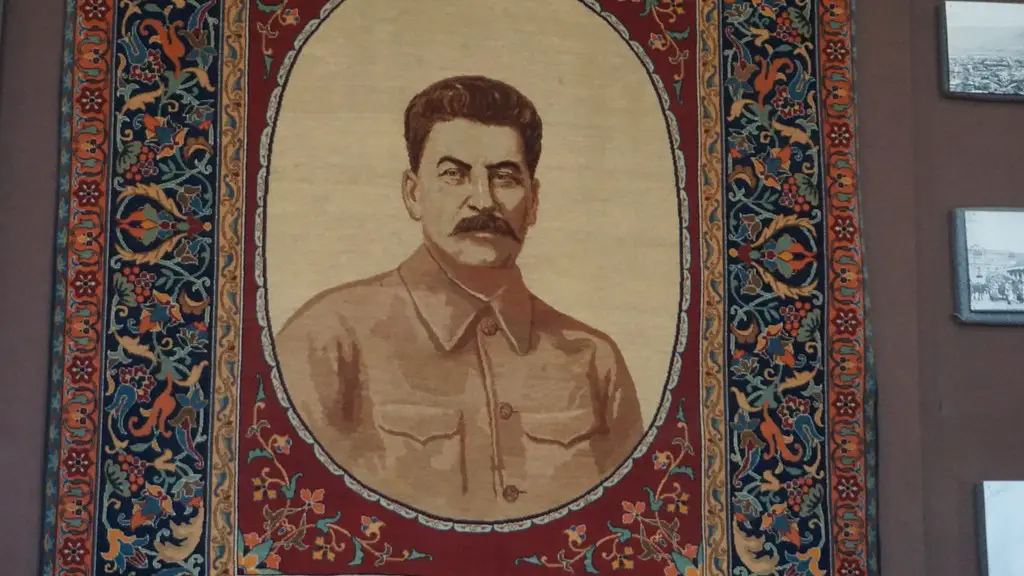Joseph Stalin was one of the most ruthless dictators in history. He came to power in the Soviet Union in the 1920s and held it for over two decades. Stalin was a master of propaganda and used it to effectively control and motivate the Soviet people. He emphasized the need for economic development and industrialization, and he promised to bring about a communist utopia. Stalin also emphasized the need for defense against the enemies of the Soviet Union, both real and imagined. He used fear and intimidation to keep the people in line, and he was responsible for the deaths of millions of people.
Under Stalin’s rule, the Soviet people experienced great hardships, including mass repression and purges, forced collectivization, and famines. However, Stalin also motivated people by promising them a better future and by appealing to their patriotic instincts. He emphasized the importance of economic development and of building a strong military, and he promoted a cult of personality around himself.
How was Joseph Stalin influential?
Stalin was one of the Bolshevik operatives in the Caucasus before his exile in Siberia in 1913-1917. He was responsible for organizing cells, spreading propaganda, and raising money through criminal activities. Stalin earned a place in Lenin’s inner circle and the highest echelons of the Bolshevik hierarchy.
The creation of an elaborate bureaucracy was one of the dictator’s key achievements. This allowed him to control all aspects of the government and society. The bureaucracy was based on the Communist Party, ministries, legislative bodies, trade unions, political police, and armed forces. This allowed him to have a tight grip on the country.
How did Stalin change the world
Stalin was a key figure in promoting Marxism–Leninism abroad and supported European anti-fascist movements during the 1930s. In 1939, his regime signed a non-aggression pact with Nazi Germany, resulting in the Soviet invasion of Poland. Stalin’s actions during this period were significant in shaping the course of the Cold War.
In November 1927, Joseph Stalin launched his “revolution from above” by setting two extraordinary goals for Soviet domestic policy: rapid industrialization and collectivization of agriculture. These goals were designed to transform the Soviet Union into a modern, industrialized society and to consolidate Stalin’s power base. However, they also had a profound impact on Soviet society, culture, and everyday life.
The industrialization drive led to a massive increase in factory production, as well as the construction of new factories and infrastructure. This in turn led to a need for more workers, which was met by an influx of rural peasants into the cities. The resulting overcrowding and poor living conditions led to social problems and tensions, which were exacerbated by the collectivization of agriculture.
The collectivization drive, which began in 1929, forced peasants to give up their land and animals and join state-run collective farms. This was done in order to increase agricultural production and to consolidate Stalin’s power over the countryside. However, the collectivization drive led to a decline in agricultural production, as well as widespread famine. It also resulted in the displacement of millions of peasants, who became known as the “kulaks.”
The impact of Stalin’s “revolution from above” was
How did Stalin improve Russia?
Stalin launched a “revolution from above” in order to improve the Soviet Union’s domestic policy. The policies were focused on rapid industrialization and the collectivization of agriculture. Stalin wanted to remove and replace any policies created under the New Economic Policy.
In a command economy, the government makes all of the economic decisions. This was implemented by Stalin in order to take total control of the Soviet Union.
How successful was Stalin’s economic policies?
Stalin’s economic policies were a period of complete disaster for the Soviet people. The policies were so badly managed and had such a negative effect on the population that any growth was dwarfed in comparison to the targets set out. Consequently, Stalin’s economic policies must be considered to be a complete failure.
The first Five-Year Plan was a comprehensive economic program launched in 1928 by Joseph Stalin. It had two primary goals: to turn the Soviet Union from a mostly agricultural country into an industrialized one, and to collectivize agriculture which was supposed to help finance industrialization. One of the reasons for the plan’s launch in 1928 was the grain shortage of 1927-1928.
How did Joseph Stalin transform the Soviet Union
Stalin was one of the most brutal dictators in history. He was responsible for the industrialization of the Soviet Union, collectivization of agriculture, and the police terror that kept his opponents in check. He also played a key role in defeating Germany in World War II and extending Soviet control over a number of Eastern European countries.
The Five-Year Plans were a series of socio-economic plans directed by the Communist Party of the Soviet Union. These plans had the stated goal of transforming the Soviet Union from a predominantly agrarian society into a leading industrial power.
The first Five-Year Plan was implemented by Stalin from 1928 to 1932. It focused on collectivization of agriculture and rapid industrialization of the Soviet Union. The plan was a economic success, with heavy industry fulfiling the plan by 108%.
How successful was Stalin in transforming the USSR?
Stalin’s attempt to collectivize and industrialize the Soviet economy from 1928-1941 was largely successful as he had realized his initial economic policies by 1941. However, the transformation was not entirely successful as there were unforeseen social and cultural consequences. While Stalin’s policies did spur on economic growth and development, they also caused great upheaval and suffering for the people of the Soviet Union. Many were displaced from their homes, resulting in social and cultural dislocation. There were also reports of widespread famine and starvation. Despite the hardships, Stalin’s policies did help to make the Soviet Union a world power.
The first Five-Year Plan (1953–57) of China was a remarkable success. It focused on rapid industrial development with the help of Soviet Union and achieved great results. The plan helped China develop its industry and improve its economy.
What did Stalin do to develop modern farms
In the 1930s, the party leadership under Stalin launched four large-scale campaigns for the implementation of various agricultural policies. These included land consolidation, the introduction of progressive crop rotation and the use of selected seeds. All of these policies were aimed at improving the Soviet Union’s agricultural output, making the country more self-sufficient and less reliant on imported goods. The campaigns were largely successful, and led to a significant increase in agricultural production in the USSR.
Here are some interesting facts about Stalin:
-He got the name Stalin while he was a revolutionary
-Before Lenin died he wrote a Testament where he recommended that Stalin be removed from power
-Stalin created the Gulag slave labor camp
-Before he had the name Stalin, he used the name “Koba”
-Stalin’s right hand man was Vyacheslav Molotov
What were the failures of Stalin’s Five-Year Plans?
The Soviet Union’s rapid industrialization and collectivization policies led to widespread famine, resulting in the death of nearly 7 million people. People were forced to work in labor camps, where many died.
The Five Year Plans were formulated, implemented and regulated by a body known as the Planning Commission. The Planning Commission was replaced by a think tank called NITI AAYOG in 2015.
Warp Up
Joseph Stalin motivated people by using a variety of methods. He gave speeches that inspired people to work harder and do their best. He also provided incentives for people to achieve their goals. He gave rewards to those who met or exceeded their targets.
Stalin motivated people by using a variety of methods. He was a master of propaganda and used it to effectively control the people. He also used Terror to keep people in line and used rewards for those who were loyal to him.




